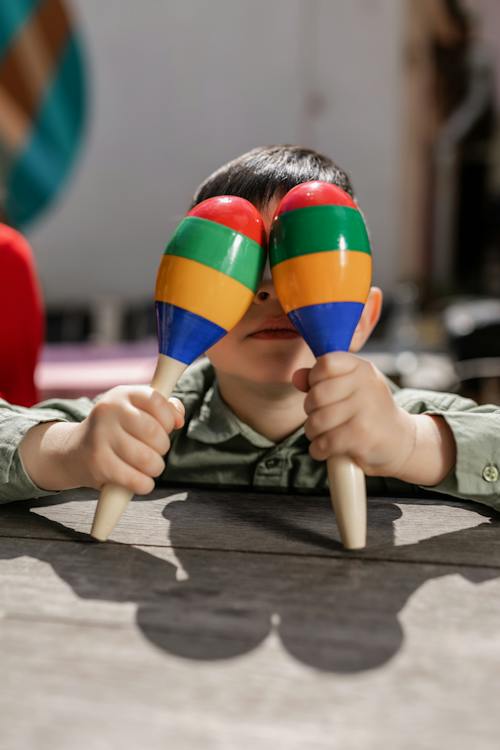The Maraca is a percussion instrument that was made out of tree fruit. This rattle instrument is classified on the idiophone group that consists of instruments that produce sound through vibration without using membranes, strings, nor air. Unlike the cymbals and castanets,which produce sounds when struck, the maracas belong to the shaken idiophone category.Maracas are also known as rumba shakers and are usually played in places like Latin America, South America, and the Caribbean. Commonly, the maracas were made out of turtle shells or dried calabash that are filled with beads, pebbles, or seeds. But these materials vary depending on what country or place the said instrument was made.
In Puerto Rico, this instrument is made from a native tree whom they called ‘Higuera.’ This tree produces fruits with hard shells, which the Taino used in making the maracas. In creating the instrument, they usually made a small hole in the fruit’s shell and extracted the pulp. Afterward, they let the shell dry and fill it with pebbles or seeds. However, modern-day maracas are now made out of plastics or leather.
Its handle was usually a stick placed through the shell’s core. It also serves as a sort of barrier for the player’s hands not to interfere with the sound of its core. Nowadays, maracas are tied together using a string for the purpose of keeping them together and not to lose one of the instrument’s pair. Typically, maracas are played in pairs. Interestingly, the seeds or pebbles inside the maracas are not equal in numbers. One of the pair will always have more seeds than the other. With this, the instrument will produce different pitches in their sound. Nevertheless, maracas nowadays are filled with all kinds of materials to make their sounds.
Initially, the people in Latin America used Maraca in religious ceremonies and chants. In these kinds of events, the maracas instrument gives a vibrant sound that highlighted these ceremonies. During the 19th and 20th centuries, the said instrument was introduced to several rhythms that developed in the Caribbean and Latin America. Meanwhile, in Cuba, the maracas were used in pairs. It was adopted in their musical genre, such as ‘guaracha,’ ‘son,’ and ‘danzon.’ In Puerto Rico’s traditional dance and style called bomba, a single maraca is used.
When it comes to the origin of the maracas, most studies agreed that the instrument came from the indigenous tribes in Latin America. However, they still argue in which country of Latin America the maracas were first seen. There were three countries that seem to be the top three that dispute the origin of the instrument- Puerto Rico, Venezuela, and Brazil. According to researches, the Arauca tribe from South America seems to be the closest link to the creation of the maracas. Despite the vagueness of its origin, one thing is sure-the maracas have a rich history and are the staple of Latin music.
Playing the maracas seems simple but mastering how to play it is another thing. One must have lots of practice and coordination in order to perfect the art of playing this instrument. As aforementioned, the maracas were previously used in religious ceremonies. However, nowadays, the maracas were associated with different kinds of genres, such as orchestral music, Cuban music, Afro-Puerto Rican music, and even rock ‘n’ roll music. In 1942 orchestral music, an American composer named Leonard Bernstein used the maracas as drumsticks in his Jeremiah Symphony. As well as that, in Cuban music, musicians usually used the maracas in their music to produce rhythmic accompaniment and beat in their genres like son Cubano, cha cha cha, guaracha, and mambo.
Furthermore, in Afro-Puerto Rican music, maraca performers usually use one Maraca that has a higher pitch. However, in Afro-Puerto Rican style mambo, they only use one large Maraca. Surprisingly, maracas were also used in rock ‘n’ roll music. In fact, Bo Diddley, an American singer, songwriter, and pioneer of rock ‘n’ roll, also uses the instrument maracas in his songs. Although the maracas are not as complicated as other percussion instruments, it plays an essential part in Latin music. From various Latin American countries, the maracas have found their way and flourish widely through several countries outside Latin America.

